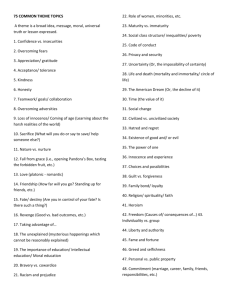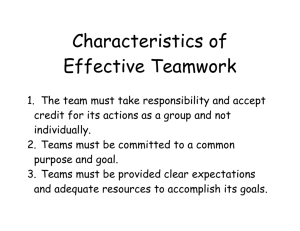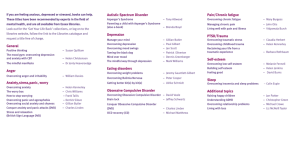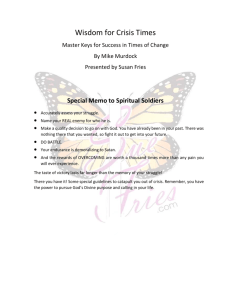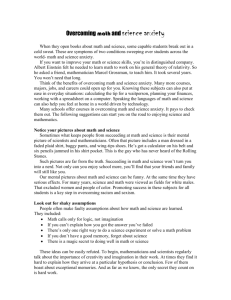Women
advertisement
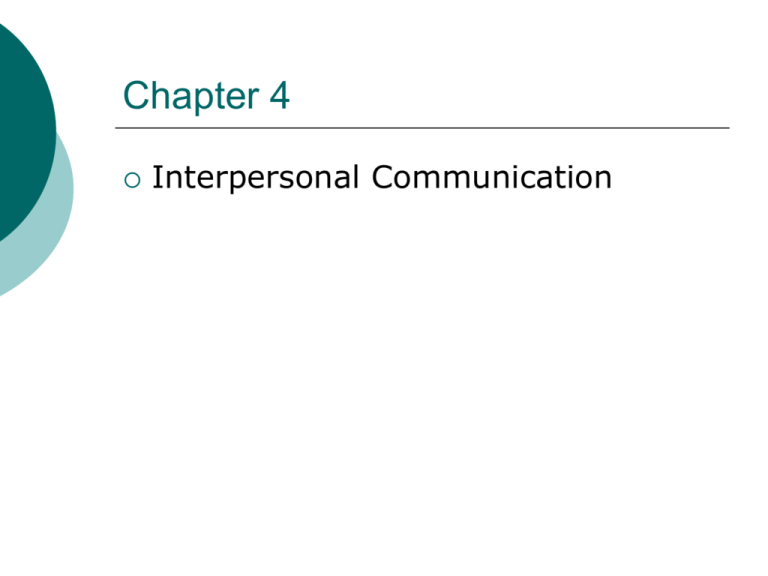
Chapter 4 Interpersonal Communication The Communication Process Noise E N V Sender I R O N M E N T Receiver Channel Message Noise Feedback E N V I R O N M E N T Relationship Building Communication is a vehicle for building relationships Sorenson, DeBord, and Ramirez say we establish relationships along two primary dimensions Dominate-subordinate (control) Cold-warm Communication Dimensions of Establishing a Relationship Dominant Personal Impersonal Warm Cold Accepting Supportive Subordinate Nonverbal Communication The transmission of messages through means other than words Nonverbal messages sometimes Accompany verbal messages Stand alone How We Communicate a Message Modes of Transmission Environment – setting; furniture Interpersonal Distance Modes of Transmission Posture Hand Gestures Facial Expressions and Eye Contact Voice Quality Personal Appearance Attention Paid to the Other Person Improve Nonverbal Communication Get some feedback on your body language Learn to relax when communicating Use gestures, but don’t overdo it Avoid using the same gesture indiscriminately Practice role-playing Use mirroring to establish rapport Mirroring Subtly imitating someone Imitate breathing pattern Adopt voice speed Imitate gestures Adopt style of dress Communication Barriers Barriers occur when message is Complex Emotionally arousing Conflicting with receiver’s mental set Overcoming Communication Problems Understand the receiver Develop empathy Recognize what motivates the receiver Understand the other persons frame of reference Overcoming Communication Problems Minimize defensive communication Blaming Denial Overcoming Communication Problems Use multiple channels In-person E-mail Phone call Letter Overcoming Communication Problems Get and give both verbal and nonverbal feedback Ask for feedback so a dialogue takes place; it builds trust Give feedback to provide reinforcement to the sender Overcoming Communication Problems Display a positive attitude You will appear more credible and trustworthy Overcoming Communication Problems Use persuasive communication Ten suggestions in your book on pages 75-77. Overcoming Communication Problems Listen actively Empathize Summarize Use supportive body language See figure 4-5 on page 78. Listening Traps Do Self-Assessment Quiz 4-2 on p. 79 Prepare for Stressful Conversations Rehearse how you will share bad news Practice temperate phrasing (tact) Be clear about what you mean Example: We can’t use your product because it lacks three features that we need. Overcoming Communication Problems Metacommunicate! Communicate about your communication Overcoming Communication Problems Recognize gender differences in communication style Gender Differences Women use conversation to build rapport Men prefer to talk to preserve independence by showing knowledge and skill Women want empathy, not solutions Men prefer to work out problems alone, while women like to talk out solutions with another person Women are more likely to compliment a coworker Men are more likely to criticize a coworker Gender Differences Men tend to be more directive and women more polite Women tend to give in to maintain a relationship Men are more interested than women in calling attention to their accomplishments Men tend to dominate discussions during meetings A Challenge for You Be more aware of how you communicate at work Watch others and see if you can discern some patterns Men-try being more empathetic Women-try being more direct

